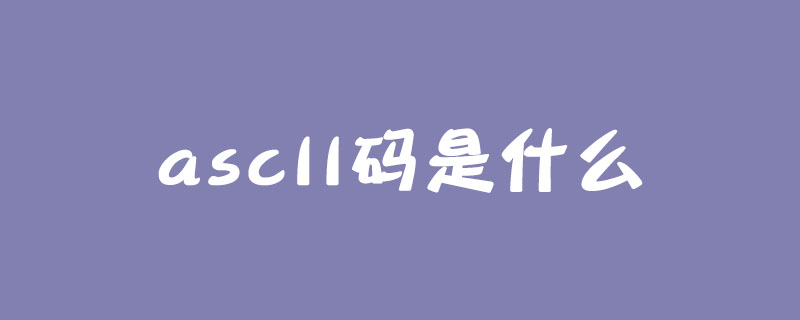

ASCII (American Standard Code for Information Interchange: American Standard Code for Information Interchange) is a computer coding system based on the Latin alphabet, mainly used to display modern English and other Western European languages. It is the most common information exchange standard today and is equivalent to the international standard ISO/IEC 646.
Expression
ASCII code uses a specified 7-bit or 8-bit binary number combination to represent 128 or 256 possible characters. Standard ASCII code, also called basic ASCII code, uses 7 binary digits (the remaining 1 binary digit is 0) to represent all uppercase and lowercase letters, numbers 0 to 9, punctuation marks, and special controls used in American English. character. Among them:
0~31 and 127 (33 in total) are control characters or special communication characters (the rest are displayable characters), such as control characters: LF (line feed), CR (carriage return), FF ( Page feed), DEL (delete), BS (backspace), BEL (ring), etc.; communication special characters: SOH (head of text), EOT (end of text), ACK (confirmation), etc.; ASCII values are 8, 9 , 10 and 13 are converted to backspace, tab, line feed and carriage return characters respectively. They do not have a specific graphic display, but will have different effects on text display depending on the application.
32~126 (95 in total) are characters (32 is a space), of which 48~57 are ten Arabic numerals from 0 to 9.
65~90 are 26 uppercase English letters, 97~122 are 26 lowercase English letters, and the rest are some punctuation marks, arithmetic symbols, etc.
Also note that in standard ASCII, its highest bit (b7) is used as a parity bit. The so-called parity check refers to a method used to check whether errors occur during code transmission. It is generally divided into two types: odd check and even check. Odd parity stipulates: the number of 1's in a byte of the correct code must be an odd number. If it is not an odd number, add 0 to the highest bit b7; even parity stipulates: the number of 1's in a byte of the correct code must be an even number. , if it is not an even number, add 1 to the highest bit b7.
The last 128 are called extended ASCII codes. Many x86-based systems support the use of extended (or "high") ASCII. Extended ASCII allows the 8th bit of each character to be used to determine an additional 128 special symbol characters, foreign letters, and graphic symbols.
Size rules
ASCII code for numbers Query ASCII skills to facilitate querying the characters corresponding to the ASCII code: Create a new text document, hold down ALT for the code value you want to query (note, this is decimal), and release it to display the corresponding character. For example: Press and hold ALT 97, 'a' will be displayed. Please note: ASCII is the abbreviation of American Standard Code for Information Interchange, not ASCⅡ (Roman numeral 2). Many people have misunderstood this place. The above is the detailed content of What is ascll code. For more information, please follow other related articles on the PHP Chinese website!